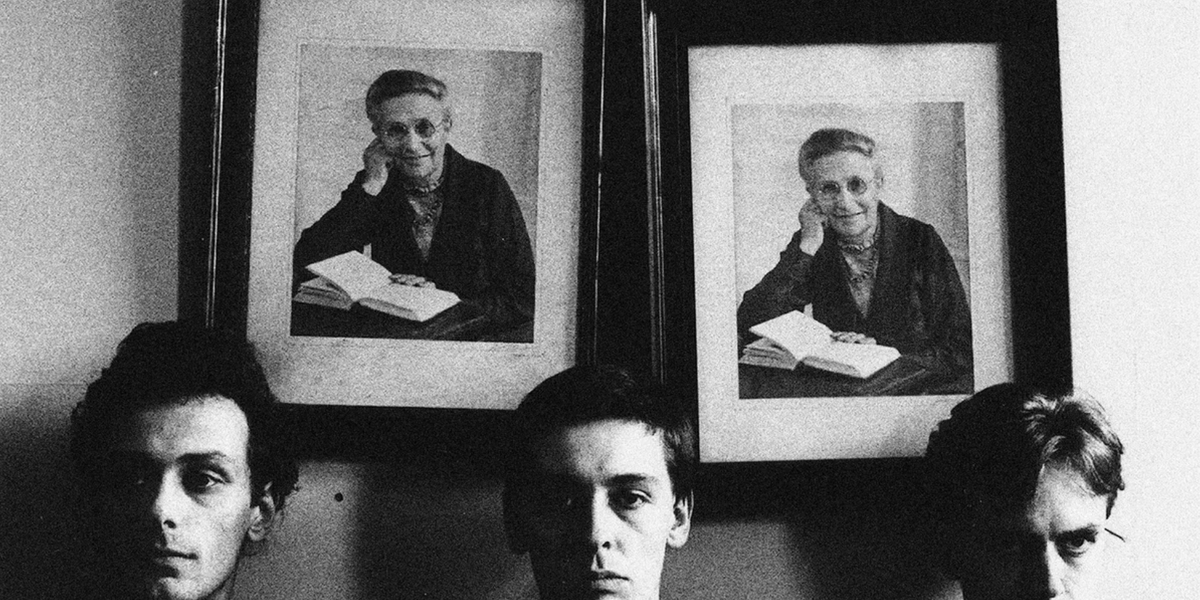On the 28 March 1977, while This Heat were recording their first radio session with producer Tony Wilson and engineer Dave Dade, the Sex Pistols were over at London’s Notre Dame Hall ushering in their end of days with Sid Vicious’ live debut as a band member. While separate in execution, both bands were positive indications of what a fertile musical moment had arisen in which it was OK to be rough around the edges so long as you were doing some fresh.
Initially released in 1996, Made Available gathered together the half-hour of material recorded by This Heat for BBC Radio 1’s John Peel Show. While many such releases are just an excuse to hear slightly more rugged renditions of familiar songs, this LP is an excellent complement to the band’s studio releases. Half the record consists of pieces only readily found here, while the four songs reprised from the band’s albums are all taken in different directions. It’s structured logically as a run through the three songs from 28 March, then 26 October.
The first session was the tighter of the two. The electronic trills introducing “Horizontal Hold” give off the same rising tension as violin stabs in a horror film. What’s amusing is that anticipation of impending shock gives way to a warmer and more welcoming iteration of the song than what would be featured on the later self-titled LP. Gareth Williams’ interventions on keyboard prod and jab while Charles Bullen’s guitar lead dodges and weaves nimbly at center-stage before suddenly locking into a disciplined half-minute of strums. An organ solo ushers in a sequence where the band all seem to be competing in a pass-the-parcel game to see who can find the most amusing mess to fill a final minute. It’s an organic approach to finding the sudden switches that would be exhibited in the song’s final form.
The band certainly put their best foot forward in selecting which songs to play – all three would still be highlights on the debut album that came out two years after the radio set was recorded. “Not Waving” is primarily an instrumental here and shows a less honed take on the discomfort of its Cold Storage Studio counterpart. The instrumental mimics the ebb-and-flow of a sea shanty but does so with pitches that hurt the ears, sounds surging over the top of one another, or receding to leave other notes starkly isolated and alone suddenly. While the song circles endlessly around its chilly vibe, it never stops moving; details stay in constant motion.
“The Fall of Saigon” is also very recognizable, except this is heavier. The song bursts in like hazy orange sunlight illuminating what sounds like the dusty shuffling of the Bataan Death March. While the lyrics’ black humor is less visible here, the instrumental is a riot with the band holding down the swaying rhythms to allow Bullen to strafe the track with a ton of overdrive.
Part of what makes this such a good compilation is that the second session constitutes a coherent extension to the first. Neither a jarring detour nor simply a reiteration of approach, it acts as an excellent coda to the song-based first half. On the original LP release, three relatively formless improvisations acted as an elongated finale. On a 2018 reissue, those three pieces were used as bookends and intervals around the two proper songs that received an outing on the BBC. This structuring is retained here, and it’s a matter of opinion whether one prefers them as relatively calming interludes or as a quest for sonic events.
All three have interest while never quite cohering into something majestic. “Basement Boy” matches aquatic squeezebox doodles to a battery of chirruping birds, while what sounds like a half-remembered “Star Spangled Banner” plays somewhere behind it all. The other two improvisations change instrumental palette but, again, feel like thoughts searching for a purpose. “Sitting” creaks across piano keys, spinning their final reverberations onward and outward, while stray jazz-tones slide and squeak over what turns into a fairly gentle piano piece. Meanwhile, “Slither” relies on held tones as a bed under light drum taps and a series of rips, tears, and rumpled fabrics.


